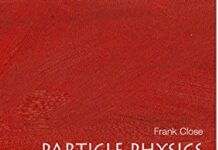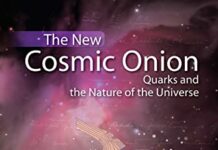
Ebook Info
- Published: 2018
- Number of pages: 176 pages
- Format: PDF
- File Size: 0.66 MB
- Authors: Frank Close
Description
Antimatter explores a strange mirror world, where particles have identical yet opposite properties to those that make up the familiar matter we encounter everyday; where left becomes right, positive becomes negative; and where, should matter and antimatter meet, the two annihilate in a blinding flash of energy that makes even thermonuclear explosions look feeble by comparison.It is an idea long beloved of science-fiction stories—but here, renowned science writer Frank Close shows that the reality of antimatter is even more fascinating than the fiction itself.We know that once, antimatter and matter existed in perfect counterbalance, and that antimatter then perpetrated a vanishing act on a cosmic scale that remains one of the greatest mysteries of the universe. Today, antimatter does not exist normally, at least on Earth, but we know that it is real for scientists are now able to make small pieces of it in particle accelerators, such as that at CERN in Geneva.Looking at the remarkable prediction of antimatter and how it grew from the meeting point of relativity and quantum theory in the early 20th century, at the discovery of the first antiparticles, at cosmic rays, annihilation, antimatter bombs, and antiworlds, Close separates the facts from the fiction about antimatter, and explains how its existence can give us profound clues about the origins and structure of the universe.Oxford Landmark Science books are ‘must-read’ classics of modern science writing which have crystallized big ideas, and shaped the way we think.
User’s Reviews
Reviews from Amazon users which were colected at the time this book was published on the website:
⭐This is a short, quite accessible, description of antimatter and its discovery.The history is well-known. Dirac married quantum mechanics with special relativity in 1928 with his famous equation displayed in stone in Westminster Abbey (I am not sure that Dirac, a confirmed atheist, would think much of this, but it is indeed an honor). In one of the most spectacular predictions of mathematical physics the equation implied the existence of a particle similar to the electron, but of positive charge. The resistance of the scientific community was so much that even Dirac seems to have said that the particle might be the proton until Oppenheimer claimed that this was not possible. Although Anderson was awarded the Nobel prize for the discovery of the positron in the cosmic rays in 1932, a few people before him missed the prize for not identifying this particle in the traces of the cosmic rays, among them the Joliot-Curies.Now the conundrum is served. If matter and antimatter are so similar and our theories of the Big Bang lead us to think that they should be created equally, how come that there was an unbalance of about one part in 10 bilion? Enter CP violation in a fleeting meson called Kzero (Nobel prize for Cronin and Val Fitch). Kzero is a combination of a down quark and an antistrange quark. It turns out that the antiKzero decays at a rate slightly different than that of Kzero. This violation has been observed in the late nineties in other mesons and is the reason for the existence of the three families of quarks.However, this small violation only explains the existence of a galaxy, not the whole universe, so scientists are looking for clues to explain this discrepancy and it seems that neutrinos might be responsible.A fascinating story superbly narrated in “Antimatter”. The book also debunks science fiction ideas to make clean powerful bombs (although US Air Force members make proposals about this subject) and the possibility to use antimatter for space travel. Not only antimatter is very costly to make, but very difficult to contain if neutral. If antimatter has charge it can be contained magnetically, but in small quantities due to the particles of the same charge repelling each other.
⭐Physicist Frank Close offers a short but enlightening look at a frequently misunderstood aspect of physical reality in his book Antimatter. In about 150 pages, Close delivers a solid summary of the historical and current research into the nature of the tricky particles, especially the positron.As a physics buff, albeit a non-technical one, Close’s descriptions and narrative are easy to follow and not overly-detailed. He keeps close to his main points, explaining the nature of antimatter and exposing some of the latest experiments into its properties, without overburdening the reader with dense technical interjections. While I thought I understood antimatter prior to reading this book, Close provided a strong overview that supplements the understanding of most any popular physics reader, myself included.Close explores many of the theories surrounding the symmetries between normal matter and antimatter, as well as offering some thoughts on why we might see a universe which appears to be largely devoid of antimatter. While a small handful of antimatter particles have been created in labs around the world, as well as a few dozen antihydrogen atoms, the mysterious lack of antimatter in the universe remains one of the questions needing a great deal of further research to explain. Close uses the Tunguska event to explore the possibility that a chunk of antimatter could have caused the currently unexplained explosion in 1908 (Close determines it was not antimatter, but leaves the question open until the latter chapters). The author also debunks most of the antimatter properties and usages found in Dan Brown’s Angels and Demons, as well as the idea that antimatter is likely to supplement traditional sources of energy found on the planet.Popular physics readers have good cause to pick up this tightly-focused book, and will almost certainly learn things about antimatter that aren’t covered in many sources. A solid, very quick read that can be knocked out in an afternoon, I recommend this book to anyone interested in physics wanting to gain a reasonable understanding of this mysterious and interesting subset of the science.
⭐At 148 pages, Mr. Close has produced a very nice little book on antimatter. It is well written, concise, and articulate, and can quite comfortably be read in just one sitting. To the point throughout, there is no spare or wasted verbiage here. Just a quick “in-and-out” on antimatter. The text contains no math whatsoever. As such, any person with a passing familiarity/interest in astronomy and particle physics will have no trouble reading and completely comprehending this book. (The book probably will be a little uncomfortable at first for readers who do not know what a positron or antiproton is, for example, but I suspect that the average reader of this book will already have a general interest in physics or astronomy such that the level of the book should not intimidate in any way whatsoever.)I particularly appreciated the length to which Mr. Close went to to de-bunk the idea promulgated implicitly in the movie “Angels and Demons” that antimatter explosive devices are just around the corner. Thank God they are not. Also debunked is the possibility that the Tunguska explosion in 1908 was the result of a piece of antimatter colliding with the Earth. Lamentably, Mr. Close also dashes hope for antimatter propulsion to the stars any time soon.All-in-all, if you wanted a short and sweet introduction to antimatter, you’ll really enjoy this book.
⭐Antimatter by Frank Close, Oxford University Press, 2009, 176 ff.The subatomic particles of matter and antimatterBy Howard JonesThis is another book in the easy-to-read style of Frank Close, Emeritus Fellow in Physics at the University of Oxford . The subject matter is rather more specialised than in his popular science books `The Cosmic Onion’ and `Particle Physics’, but antimatter is now a part of undergraduate physics courses and is such stuff as sci-fi stories are made of. This book is therefore likely to be of interest to quite a wide readership, despite its specialist subject matter. Non-mathematicians will be relieved to know that the underlying matrix mathematics is confined to a short Appendix.The existence of antimatter was predicted by engineer-turned-physicist Paul Dirac in 1928. It emerged from the combination of quantum mechanics with Einstein’s relativity and introduced the concept of states of negative energy. These are unknown in our real world but in the antimatter world, negatives become positives, and vice versa, and the particle property called spin becomes reversed.When matter and antimatter collide, they are both annihilated to produce a huge amount of energy, usually in the gamma ray part of the electromagnetic spectrum. This, and the historical background to the development of antimatter particles, is all described simply and beautifully by Close: I’m sure, even if I weren’t a physicist and mathematician with an intrinsic interest in this subject, I would find it elegantly explained. Dirac shared the 1933 Nobel Prize in Physics with Erwin Schrödinger for their respective discoveries in quantum physics. The discovery and exploration of these antimatter particles by teams of competing scientists reads (in Close’s treatment) like a `Boys Own’ adventure story.This is the most lucid presentation I have read of a tiny corner of particle physics and quantum theory and if you want to know where Dirac’s version of quantum theory has led us, I know of no better explanation than in this book.Dr Howard A. Jones is the author of The Thoughtful Guide to God (2006) and The Tao of Holism (2008), both published by O Books of Winchester, U.K.; and The World as Spirit published by Fairhill Publishing, Whitland, West Wales, 2011.
⭐The New Cosmic Onion: Quarks and the Nature of the Universe
⭐This is a nice little book about antimatter. Some may ask if one could write a whole book just about antimatter, but Frank Close does it well.The book starts a little bit slow though, carefully explaining what antimatter is. Later it catches on, and the second half of the book is indeed very interesting.The book does not only explain what antimatter is, and how to produce it, but also tells us the full history of how it was first discovered and up till now.Frank Close show us what an important role in the whole world of particles that antimatter plays. The knowledge in this book should be mandatory for all high school students.Finally Frank tell us about the antimatter we see in the movie “Angels and Demons” and the possible role of antimatter in the future use in spaceships.
⭐Loved it. Well written and fascinating read. I have always found Dirac a fascinating character being a physicist who reinvented an entire system of maths just to solve the relativistic version of the quantum wave equation. I didn’t know he was also the father of this entire topic.See my review of another of Frank Close’s books, simply entitled “Neutrino”
⭐This book although a bit short to my taste is a very good start on the subject. It does not only deal with antimatter but also some other fields of physics.I was puzzled to learn that some governements have apparently already conducted research for the next generation of mass destruction weapons.Underlying all of this, one can realise the author’s experience as a reasearcher.
⭐I read this book as a follow on from Simon Singh’s ‘Big Bang’ which is absolutely brilliant. This is also an excellent book which gives some idea of why the universe exists at all and explains in understandable terms why there is now just matter and there is no (or not much)anti-matter. Fred Hoyles autobiography is also fascinating for anyone interested in cosmology.
Keywords
Free Download Antimatter (Oxford Landmark Science) 2nd Edition in PDF format
Antimatter (Oxford Landmark Science) 2nd Edition PDF Free Download
Download Antimatter (Oxford Landmark Science) 2nd Edition 2018 PDF Free
Antimatter (Oxford Landmark Science) 2nd Edition 2018 PDF Free Download
Download Antimatter (Oxford Landmark Science) 2nd Edition PDF
Free Download Ebook Antimatter (Oxford Landmark Science) 2nd Edition




